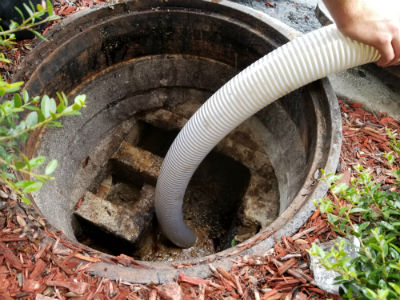The purpose of this article is not to tell you exactly how much it would cost for Greasecycle to pump out a trap. If you want a quote for our service, please give us a call. Rather, the purpose of this article is to give you a rough idea of the industry average of grease trap pumping prices in North Carolina. My hope is that this knowledge will be a roadmap for you, as you draw up your budget and speak with potential grease vendors.
In general, it costs between $115 to $1,040 to pump a grease trap.

The first price listed above is for pumping out a small indoor 20-30 gal under-sink grease trap that's pumped out on a high frequency every 14-28 days. The second price, $1,040 is for the largest possible grease trap (5,000 gals) that's out of compliance and hasn't been pumped in years. The first trap would take a pumper about 20 minutes. The second trap would take two workers 2-4 hours to complete.
In other words, these two prices are the two extremes of grease trap pumping costs. But what about the cost of pumping out an average size grease trap on an average frequency? Once again, it depends. A key line of separation in the grease trap business is whether or not a grease trap is inside the restaurant or outside the restaurant underground.
Indoor Grease Interceptors
Most indoor grease traps with easy access are 30-200 gallons, and most pumpers will charge between $125-$180 to pump out these types of traps, provided the service is set up on an ongoing basis.
Most pumpers would charge $190-$240 to just do a “one-off” pumping. The main reason is that the first pumping is the most expensive for a hauler to do. There are three reasons for this:
- They have to work you into their invoicing system.
- They have to find the trap.
- They have to deal with a higher than typical solids concentration in a trap that has presumably not been pumped out recently.
The key takeaway is that it's in your best interest to set yourself up with an ongoing service agreement with a well reputable hauler. This ensures that you have a lower per cleaning cost, you stay in compliance, and you don't have your business interrupted with backups and overflows.
Outdoor Grease Traps
Unless you're in a building older than 25 years, or the building is in a very dense area such as a downtown area, you probably have a large outdoor grease trap.
If the building was built within the last ten years, you probably have a 1500 gal grease trap. If it was built 10-20 years ago, you probably have a 1000 gal grease trap.
Lots of other variables go into the sizing of a grease trap, such as:
- the square footage of the restaurant;
- whether the original restaurant used their own plates to serve food vs. takeout; and
- the municipality of the restaurant.
What you can do to find the size of your grease trap is look at the manifests from your last pumping or look at the plumbing schematics of your building.
The cost for having a 1000 – 1500 gal grease trap is between $225 - $315 per pumping, assuming that you sign up for an extended service program with a given grease hauler.
A “one-off” pumping would certainly cost more. 80% of outdoor grease traps are either 1000 gal or 1500 gal. The other 20% of outdoor grease traps come in sizes such as 2500, 3000, 3500 and 5,000. Of course, those cost significantly more than the price for the traditional 1000 gal to 1500 gal grease traps.
Other Considerations that Affect Grease Trap Cleaning Costs
 Other considerations that increase the cost of pumping out a small indoor grease interceptor are the following.
Other considerations that increase the cost of pumping out a small indoor grease interceptor are the following.
1) The hauler must bring more than 75 feet of hose to reach the grease trap because the truck cannot park close to the location of the grease trap.
2) The grease trap is in a basement or second floor. As a result, the trap (interceptor) must be serviced with a mobile vac unit.
3) An exact service time is requested.
4) Emergency call in, where the grease trap must be pumped out in the next 24 hours.
5) The grease trap has not been pumped in a very long time and as a result, the driver must spend more time on site.
One variable that can offset the price of having your grease trap pumped is bundling this service with used cooking oil collection.
If your restaurant produces used cooking oil, and you sign up with a company that collects used cooking oil as well as pumps out grease traps, you can possibly get a reduced fee for grease trap pumping.
Read our Comprehensive Guide on Restaurant Grease Trap Cleaning to learn more about the grease trap cleaning process.